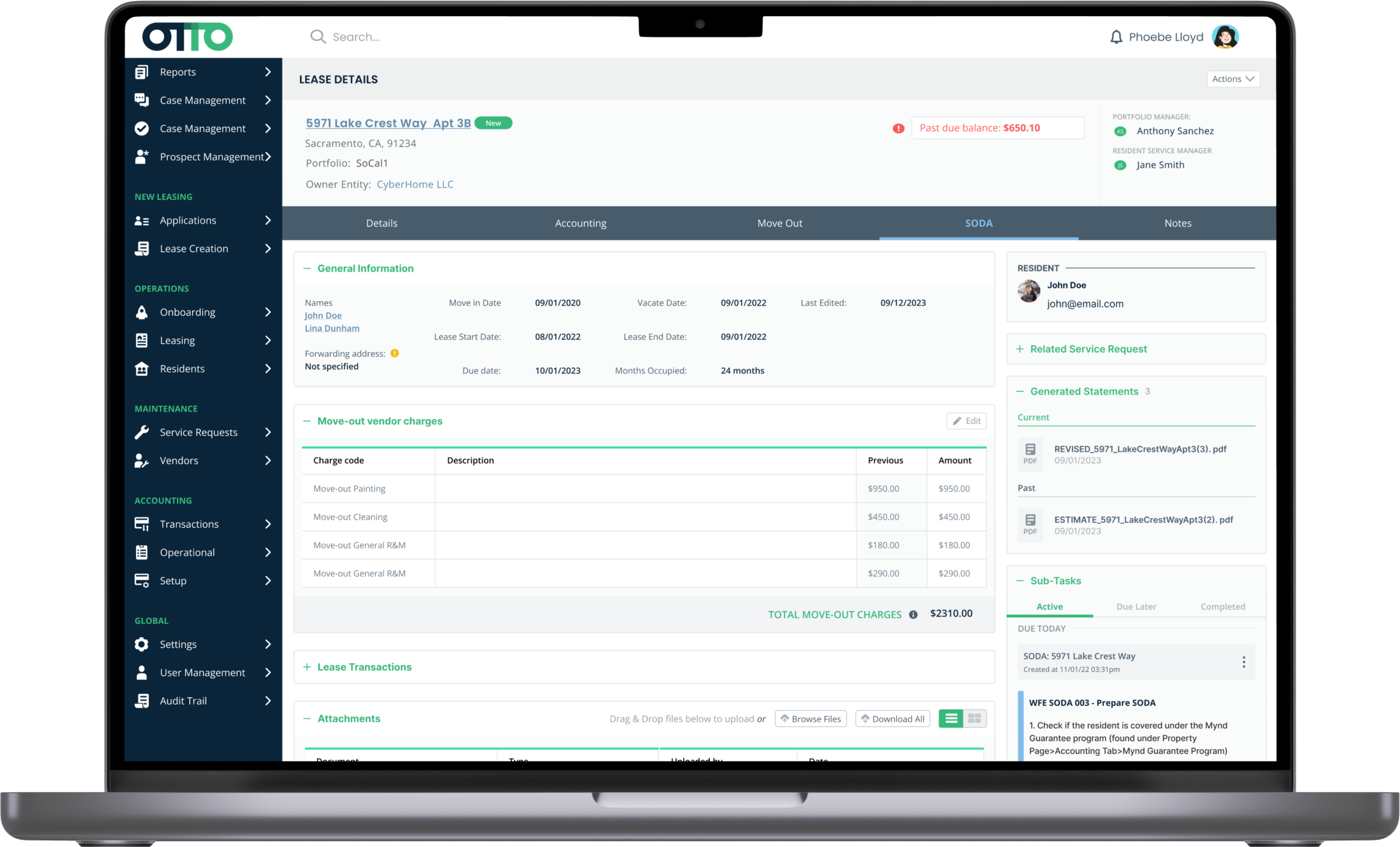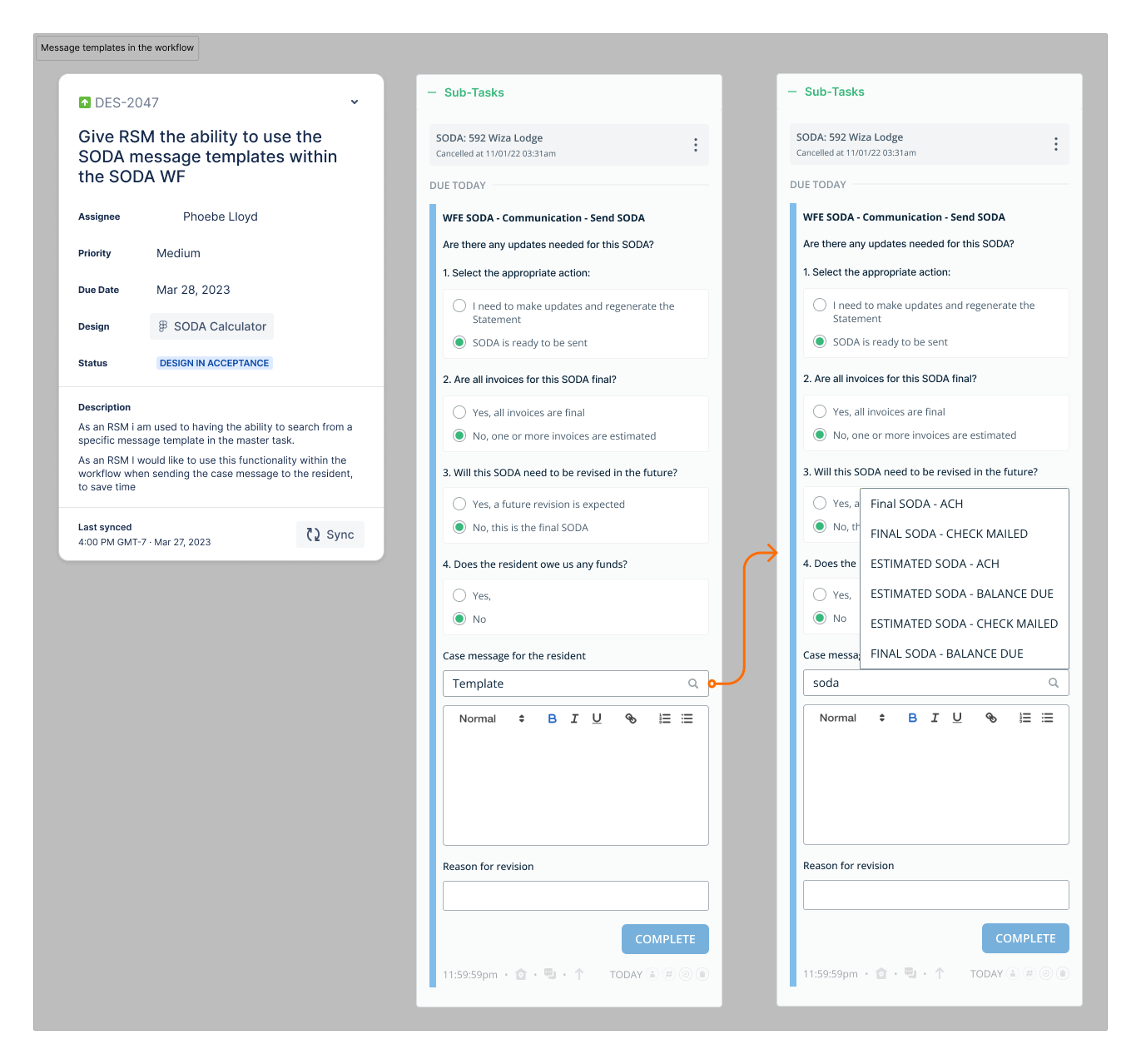SODA
0-1 platform tool for processing security deposit returns and statements with workflow integration, increasing efficiency by 52% for Mynd.
Statement Of Deposit Accounting
Who is mynd?
Mynd is a forward thinking tech enabled property management and real estate investing company based in Oakland.
And what is SODA?
SODA stands for Statement of Deposit Accounting, a process of calculating the amount of a tenant’s deposit that will be returned after a move out inspection, and creating a statement.
I was the only designer on this project responsible for research, design, testing and copy writing.
The problem
The existing process was insanely inefficient and frustrating for our users. This had been a known issue for a few years.
Cycle time: 60mins
(Per statement per user)
Key Metrics
GOAL
Reduce the time it takes on average for RSMs to complete a SODA
Shadowing sessions and interviews
Deep dive discovery session with the entire resident services team (including accounting)
Mapped the current process
Opportunity mapping (insights, HMW, hypothesis, bets)
What I did
The old process
The research for this project was MASSIVE. If you want to see this map and more, I have linked a FigJam file below. Best viewed on desktop.
Key takeaways
Cycle time is 60 minutes or more because:
User is jumping between multiple tools to complete.
Repetition of manual data entry in multiple places.
Double/triple checking the data matches
User calculating manually, high human error risk.
User’s don’t fully understand the current process and EDAW worksheet
Pain points
The Estimate Deposit Accounting Worksheet
Doesn’t it look super fun to use?!
👎
Prioritising
I synthesised the data into 6 simple projects that we could start on for the MVP. We decided this would launched in 2 phases.
The new process
With workflow engine logic
This was my first time learning about workflow engines. I worked closely with the BE engineers to understand how it would function, making sure my design had all the elements necessary and the eng team had all of the data and context they needed to build. To take a closer look at this flow chart I have linked the FigJam file below:
The Designs
Overview of the SODA tab
Tool for adjusting the cost of move out charges due to wear and tear
Example of the workflow engine within the side bar
Mock external PDF - system generated for the resident
So how did we do?
Per SODA per user
time taken
28
Minutes
Time saved
32
minutes
Efficiency %
52%
Increase
I expect these metrics have improved even further since I left. The scale of this project was enormous, and ongoing. We tested the MVP with stakeholders and iterated on their feedback before releasing and training users on the new tool. Phase 2 saw a lot of upgrades and fixes for edge cases we hadn’t predicted. As you can see from the graph below, the amount of properties (doors) per user (RSM) increased by around 200 or 20% when we launched the tool company wide in January of 2023.
What did the users say?





















